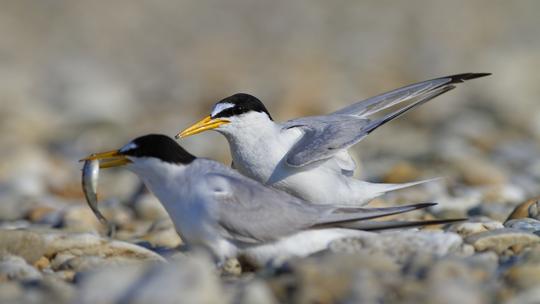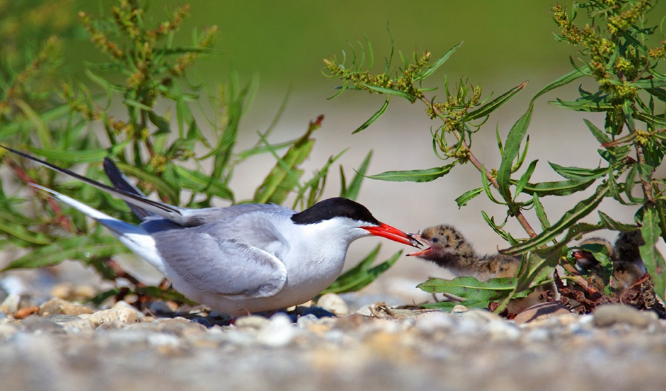2018 – Year of the Tern
Zagreb, Croatia – Non-governmental organizations WWF Adria and Biom proclaimed 2018 as Year of the Tern. Both organizations, WWF and Biom, will carry out separate project activities in parallel throughout the year to protect terns and raise awareness on the importance of preserving their habitats along the Drava river. Activities within the DRAVA LIFE project WWF is a part of and of the Interreg Project Conserving populations of terns in the Sava and Drava basin BIOM is involved with, include actions for conservation of these birds habitat.
Terns are birds that can be found in almost all parts of the world, on seashores as well as on river banks, except the northern regions covered by eternal ice. Most of them are migratory birds that spend their winters in warmer southern regions. They are social and can be seen in smaller or larger flocks, nesting in colonies or individually on gravel islands, rock cliffs, sandy beaches, riverbeds, wetlands, while some of them also nest on trees. Their aerodynamic body allows them to swiftly dive through the air when hunting.
The little tern (Sternula albifrons) is the smallest species in the family of terns. It measures between 20 and 28 centimeters and weighs about 25 grams. Apart from its size and white head, it can be recognized by its yellow beak and orange legs. The common tern (Sterna hirundo) is larger, sized between 31-35 cm and weighing around 110-150 grams. Unlike little terns, common terns have red feet and a red beak with dark top and no white forehead. Both tern species are migratory birds that spend the winter season in Africa. They feed on fish, crabs, insects and molluscs.
Little terns have become extremely rare in Croatia. “Due to the constant disturbance, disappearance of suitable habitats and regulation of the river in the past, there are only four pairs of little tern left on the Drava river. In order to increase the number of pairs and to educate the local population, six information panels about the little tern were set up last year along the Drava river in Koprivnica-Križevci County. This is probably the only habitat for little terns on Drava in Croatia”, says Branka Španiček, project officer at WWF Adria.
The nesting population of common terns is estimated to have 400 to 700 pairs in Croatia. Largest colonies are found on the Rakitje and Ormož lakes. “Measures undertaken on natural watercourses such as extraction of gravel out of the river bed, river bank regulation, construction of dams and hydropower plants, water pollution and various sports and recreation activities represent threats which endanger common terns. These activities endanger the success of their nesting. Terns are very often not able to find an adequate place for nesting in the area they inhabit due to the disturbing factors and large fluctuations of water level. Additional disadvantage is the fact that they are subject to predators such as mammals (rats, foxes and otters) and other birds (gulls and crows). This year Biom will protect a colony of common terns from predators on the lake Ormož for the first time by placing an electric fence“, says Biljana Ječmenica, expert associate for protection of nature at the environmental organization Biom.
Beside the need to protect the last nesting pairs of little and common terns and to prevent disturbance of the birds especially during the nesting season from mid-April to late July it is also necessary to restore river dynamics and to allow rivers to create new gravel and sand banks, the usual nesting habitats for these birds. Both projects therefore focus on jointly addressing these threats for both birds and their habitats.


